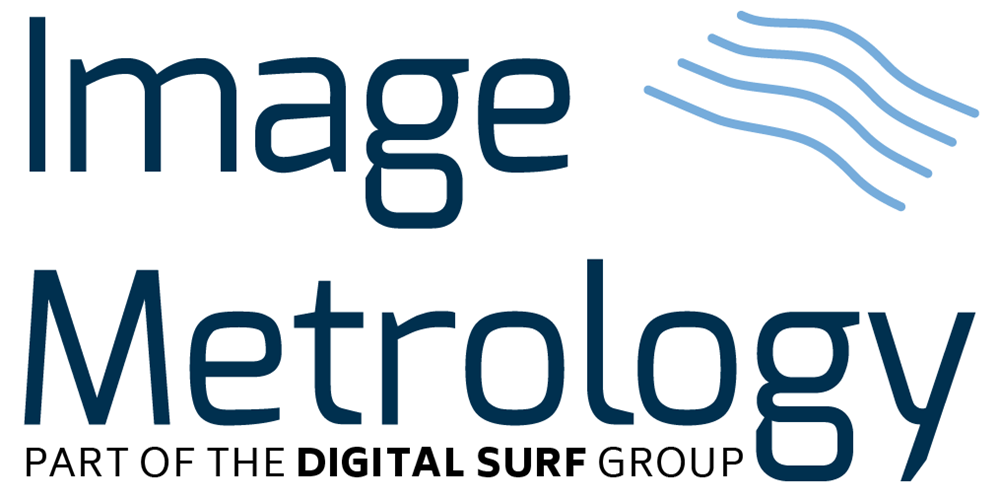Micromilling and Analyzing Terraces
The University of Padova in Italy conducts research to investigate effects of miniaturization on surface generation in micromilling, with a particular focus on generated surface topographies. SPIP™ is used for plane correction, roughness analysis, and quantification, and 3D rendering of milled surfaces exhibiting terraces.
Ball nose micromilling is an interesting technique for the realization of nearly any type of 3D sculptured surface in the mini and micro scale. In particular, the possibility of applying such technique to machining of hardened tool steel makes micromilling a popular choice for micromolds manufacturing. The action of the cutting tool generates a lay characterized by a typical constant wavelength, corresponding to the machining step over with rough sidewalls and traces of chip residual.
Considering the small values of the cutting parameters involved, understanding and evaluating the relevant tool-workpiece materials interaction phenomena require high resolution 3D measuring instruments, such as atomic force microscopy. Other measuring techniques such as stylus profilometry, optical profilometry and stereoscopic scanning electron microscopy were used for comparison.
Reference: Francesco Marinello, PhD at University of Padova
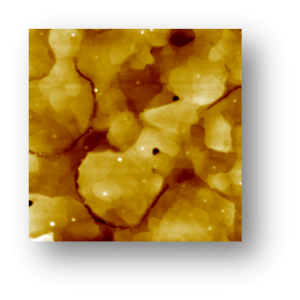
Raw Image of Milled Surface
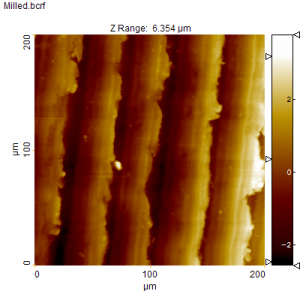
Due to scanning artifacts the terraces are tilted.
Plane Correction
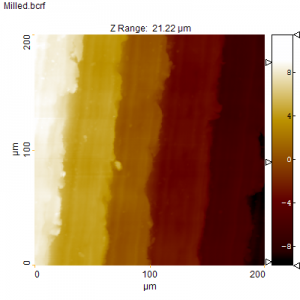
The tilt has been corrected using the Plane Correction tool in SPIP™.
Area of Interest (AOI)
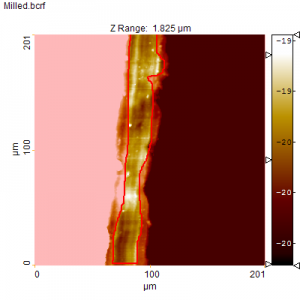
The AOI tool has been used to select a single terrace before measuring the roughness.
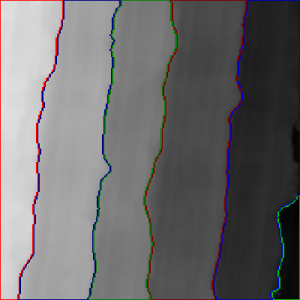
Detection of terraces
The terraces have been detected by using the particle analysis module.
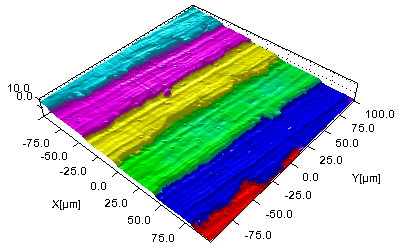
3D view
The 3D Visualization Studio allows users to render the surface in 3D. In this 1-1-1 view the color bar has been edited assigning a different color to each terrace.
